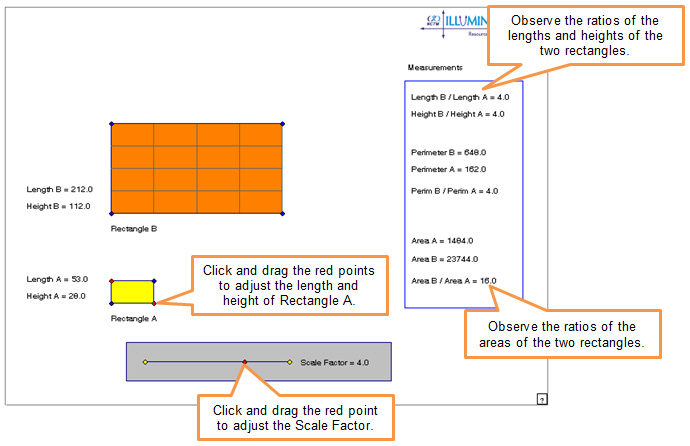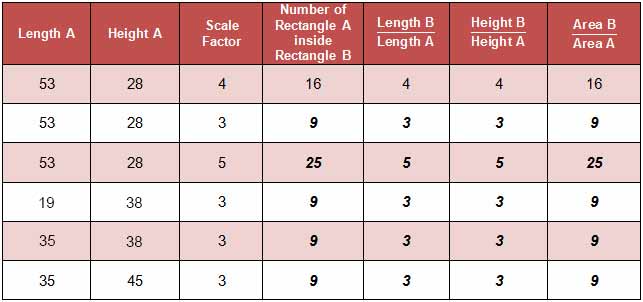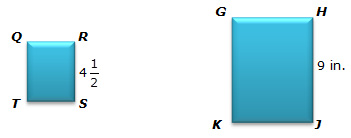
In this section, you will use an interactive applet to build a series of rectangles.

![]()
Click the image below to open an applet to investigate how using a scale factor affects the area of similar rectangles. Use the applet to complete the table below, and then use your table to answer the questions that follow.
Interactive popup. Assistance may be required.


Length A |
Height A |
Scale Factor |
Number of Rectangle A inside Rectangle B |
Length B over Length A Length B Length A |
Height B over Height A Height B Height A |
Area B over Area A Area B Area A |
53 |
28 |
4 |
16 |
4 |
4 |
16 |
53 |
28 |
3 |
|
|
|
|
53 |
28 |
5 |
|
|
|
|
19 |
38 |
3 |
|
|
|
|
35 |
38 |
3 |
|
|
|
|
35 |
45 |
3 |
|
|
|
|
Interactive popup. Assistance may be required.


How does the Scale Factor compare to the ratio Length B over Length A
Length B
Length A
?
Interactive popup. Assistance may be required.

How does the Scale Factor compare to the ratio Height B over Height A
Height B
Height A
?
Interactive popup. Assistance may be required.

How does the Scale Factor compare to the ratio Area B over Area A
Area B
Area A
?
Interactive popup. Assistance may be required.

How does the Number of Rectangle A’s that appear to fit inside Rectangle B compare to the Scale Factor?
Interactive popup. Assistance may be required.
The Number of Rectangle A’s that appear to fit inside Rectangle B is equal to the square of the Scale Factor.
Is the relationship you have observed between the ratio Area B over Area A Area B Area A and the Scale Factor true for different scale factors? How do you know? Confirm your answer using additional scale factors for the same Rectangle A in the applet.
Interactive popup. Assistance may be required.
Yes. In each row with different scale factors, the ratio of Area B to Area A is equal to the square of the scale factor. Using Scale Factors between 1.0 and 6.0 in the applet supports this observation. 
Is the relationship you have observed between the ratio Area B over Area A Area B Area A and the Scale Factor true for different combinations of lengths and widths? How do you know?
Interactive popup. Assistance may be required.
Yes. In each row with the same scale factor but different lengths and widths, the ratio of Area B to Area A is equal to the square of the scale factor. Using several different combinations of length and width in the applet supports this observation.
![]()

Interactive popup. Assistance may be required.
What is the ratio of the corresponding sides?
Interactive popup. Assistance may be required.
131 over 2 1 2 x (2)2 = 131 over 2 1 2 x 4 = 54 square inches